DESQ Compact Desktop IP-Audio Console Axia®
DESQ Compact Desktop IP-Audio Console Axia®
Six-fader, two-bus Axia DESQ console is a cost-effective, small-footprint option for small production studios, remote vehicles, content ingest stations, or even “personal” mixers for programming personnel.
- DESCRIÇÃO
- CARACTERÍSTICAS
- ESPECIFICAÇÕES
- DOWNLOADS
- GARANTIA
- Informação adicional
- Avaliações (0)
DESQ MIXING CONSOLE OVERVIEW
Six-fader, two-bus Axia DESQ console is a cost-effective, small-footprint console option perfect for small production studios, remote vehicles, content ingest stations, etc. DESQ has two stereo mixing buses and a Preview (cue) bus, six high-quality 100mm conductive-plastic faders for silky-smooth operation and long life, razor-sharp OLED channel options displays, an OLED meter display with switchable VU / PPM ballistics, and monitor / headphone controls for auditioning of Program buses or two assignable External monitor source selections.
There’s also an OLED time-of-day clock + timer display, with auto / manual reset option. As with all Axia consoles, aircraft-quality switches feature all-LED lighting; the anodized work surface has rub- proof etched markings that can’t rub off. Additional features include automatic mix-minus for phone callers and codec sources, EQ for voice sources, and Show Profile instant recall of up to four pre-defined console “snapshots”.
DESQ requires no countertop cutout and takes only 16” square of desk space; it connects to the QOR.16 integrated console engine with a single power/control cable. DESQ is ideal for standalone installation, but works with larger Axia networks too. A DESQ control surface and a QOR.16 integrated console engine constitute a complete RAQ system, but two DESQ consoles, or one RAQ and one DESQ console, may be paired with a single QOR.16 for cost-effective multi-console deployment.
DESQ MIXING CONSOLE FEATURES
- 6 faders, each with instant access to any source. Assign any type of source to any channel with a simple twist of the Options knob.
- Proven surface-and-core architecture separates control from mixing processes. No audio passes directly through DESQ; all mixing and processing is performed in the QOR.16 Integrated Console Engine – so studio “accidents” don’t turn into off-air events.
- Software upgrade for QOR.16 integrated console makes DESQ AoIP console AES67-compliant.
- Two stereo mix buses and a Preview (cue) bus.
- Alpha-numeric OLED displays below each fader always show the current audio source with audio confidence meter, and, when the Options knob is pressed, offer fast adjustment of fader gain trim, EQ, pan and balance and other features without panel clutter or intimidating controls.
- Channel-input confidence meters assure talent of audio presence before taking sources to air.
- Built-in three-band per-source EQ.
- Each fader’s context-sensitive Soft key can be used to activate talkback, start delivery system events, or perform other special functions.
- Every channel strip has a stereo Preview (“cue”) function, with a unique interlock system for fast cuing of multiple sources.
- Reconfigurable CR monitor section with direct-selection of Program buses and reassignable buttons that allow instant monitoring of external sources.
- Four custom Show Profile “snapshots” can be saved to instantly recall frequently-used console setups –
useful to quickly prepare for interview segments, music-intensive programming, call-in talk shows, etc. - Automatic mix-minuses for phones, remote talent, etc.
- Bright OLED meter display provides responsive, readable VU or PPM metering styles. Switchable display allows metering either Program bus.
- All functions can be accessed remotely for configuration, management and diagnostic purposes using any standard Web browser.
- Separate OLED clock/timer display features NTP-capable time-of-day clock and event timer that can be manually or automatically reset via source activation.
- Network gateway enables loading networked sources while simultaneously exporting outputs back to the network.
- Easy-to-deploy QOR.16 integrated console engine includes console CPU and power supply, DSP mixing engine, custom Ethernet switch with 6 Livewire ports and 2 Gigabit ports for studio networking, 8 analog inputs and 4 analog outputs, 1 AES input and 1 AES output, 2 Mic inputs with switchable Phantom power, and 4 GPIO ports for machine control. I/O can be expanded using Axia xNodes.
- QOR.16’s integrated zero-configuration network switch is custom-designed for broadcasting — no switch setup required. Supports Simple Networking, allowing up to 4 QOR engines to be daisy-chained without the need for a separate core switch.
- Each QOR.16 can support two connected RAQ or DESQ consoles, or one of each.
- Fan-free, convection-cooled power supply for noiseless in-studio operation.
DESQ MIXING CONSOLE SPECIFICATIONS
QOR.16 Connections
- Microphone Inputs: 2x balanced XLR-F, with selectable Phantom power
- Analog Inputs: 8x RJ-45, StudioHub+ standard.
- Analog Outputs: 4x RJ-45, StudioHub+ standard.
- AES/EBU Inputs: 1x RJ-45, StudioHub+ standard.
- AES/EBU Outputs: 1x RJ-45, StudioHub+ standard.
- GPIO: 4x DB-15
- Livewire:
- 4x 100Base-T with PoE, RJ-45
- 2x 100Base-T, RJ-45
- 2x 1000Base-T, RJ-45
- 2x Gigabit, SFP (Small Form Pluggable)
- Console Frame Connections: 1x, 6-pin “latch and lock” style
- Accessory Connections: 1x, 6-pin “latch and lock” style
Microphone Preamplifiers
- Source Impedance: 150 ohms
- Input Impedance: 4 k ohms minimum, balanced
- Nominal Level Range: Adjustable, -75 dBu to -20 dBu
- Input Headroom: >20 dB above nominal input
- Output Level: +4 dBu, nominal
Analog Line Inputs
- Input Impedance: 20 k Ohms
- Nominal Level Range: Selectable, +4 dBu or -10dBv
- Input Headroom: 20 dB above nominal input
Analog Line Outputs
- Output Source Impedance: <50 ohms balanced
- Output Load Impedance: 600 ohms, minimum
- Nominal Output Level: +4 dBu
- Maximum Output Level: +24 dBu
Digital Audio Inputs And Outputs
- Reference Level: +4 dBu (-20 dB FSD)
- Impedance: 110 Ohm, balanced (XLR)
- Signal Format: AES-3 (AES/EBU)
- AES-3 Input Compliance: 24-bit with selectable sample rate conversion, 20 kHz to 216kHz input sample rate capable.
- AES-3 Output Compliance: 24-bit
- Digital Reference: Internal (network timebase) or external reference 48 kHz, +/- 2 ppm
- Internal Sampling Rate: 48 kHz
- Output Sample Rate: 48 kHz
- A/D Conversions: 24-bit, Delta-Sigma, 256x oversampling
- D/A Conversions: 24-bit, Delta-Sigma, 256x oversampling
- Latency <3 ms, mic in to monitor out, including network and processor loop
Frequency Response
- Any input to any output: +0.5 / -0.5 dB, 20 Hz to 20 kHz
Dynamic Range
- Analog Input to Analog Output: 102 dB referenced to 0 dBFS, 105 dB “A” weighted to 0 dBFS
- Analog Input to Digital Output: 105 dB referenced to 0 dBFS
- Digital Input to Analog Output: 103 dB referenced to 0 dBFS, 106 dB “A” weighted
- Digital Input to Digital Output: 125 dB
Equivalent Input Noise
- Microphone Preamp: -128 dBu, 150 ohm source, reference -50 dBu input level
Total Harmonic Distortion + Noise
- Mic Pre Input to Analog Line Output: <0.005%, 1 kHz, -38 dBu input, +18 dBu output
- Analog Input to Analog Output: <0.008%, 1 kHz, +18 dBu input, +18 dBu output
- Digital Input to Digital Output: <0.0003%, 1 kHz, -20 dBFS
- Digital Input to Analog Output: <0.005%, 1 kHz, -6 dBFS input, +18 dBu output
Crosstalk Isolation, Stereo Separation And CMRR
- Analog Line channel to channel isolation: 90 dB isolation minimum, 20 Hz to 20 kH
- Microphone channel to channel isolation: 80 dB isolation minimum, 20 Hz to 20 kHz
- Analog Line Stereo separation: 85 dB isolation minimum, 20Hz to 20 kHz
- Analog Line Input CMRR: >50 dB, 20 Hz to 20 kHz
- Microphone Input CMRR: >50 dB, 20 Hz to 20 kHz
Audio Processing
- Mic Equalizer (applicable to up to 6 faders)
- Frequency Bands: 20Hz to 320Hz, 125Hz to 2KHz, 1.25KHz to 20KHz.
- Cut/Boost range on each band: -25dB to +15dB.
- Q-factor: Automatic – bandwidth varies based on amount of cut or boost.
Power Supply AC Input, QOR.16 with DESQ Console
- Auto-sensing supply, 90VAC to 240VAC, 50 Hz to 60 Hz, IEC receptacle, internal fuse
- Power consumption: 100 Watts
Operating Temperatures
- -10 degrees C to +40 degrees C, <90% humidity, no condensation
Dimensions
- W 15.31in (38.9 cm), H 15.30 in (38.87 cm), D 2.79 in (7.1 cm)
Regulatory
- Click here to view the current regulatory compliance
DESQ MIXING CONSOLE IN DEPTH
A big console for small spaces.
Not every studio requires a full-size mixing console. Not every studio is full-size, itself! But you still want the advantages of IP-Audio networking: the ability to send program audio to other studios, the ability to consume audio from satellite downlinks, remote codecs and phone hybrids, or to trigger routing scene changes from a user-mapped control panel. And you don’t want a toylike plastic pro-audio mixer — you want a real broadcast console that fits into a rack or turret, or on a small desktop space. A console with a small footprint, but big capabilities.

DESQ is a compact, special-purpose IP console from Axia. It may be compact in stature, but it’s big on features and performance. DESQ has “big board” capabilities you won’t find in other consoles of this size — automatic per-fader mix-minus, built-in EQ for voice and codec sources, and the ability to instantly load new local or networked sources to any fader with just the turn of a knob. Which means DESQ easily out-classes mixers with similar form factors — and even ones that take up much more room.

DESQ is a six-fader console in a form-factor that lets it fit just about anywhere there’s a few inches of spare space: DESQ is only 16 inches (39.9 cm) square. It’s built Axia-tough, with a machined-aluminum work surface that takes the rough stuff jocks can dish out. Our familiar 100 mm. conductive-plastic faders feel like silk under the fingertips, and you’ll also find the avionics-grade switches with LED lighting that have become an Axia hallmark.
Other features include OLED channel and meter displays, four-source monitor section with two external locations that can be reassigned “on the fly”, and an OLED time-of-day clock and event timer. Like its rackmount cousin, RAQ, DESQ also has four Show Profile console snapshot locations, and push-and- turn Options knobs at the top of each fader that give instant access to fader source assignments, pan/ balance, and input gain trim.
Despite all these features, DESQ is so cost-effective, broadcasters are coming up with creative, new uses for them. Its big features and small footprint make DESQ the perfect console for interview studios, live performance spaces for on-air broadcast, news and feature production — whatever. Take it on road trip remotes, or to sporting events where multiple mics are required. Or put it in mobile units or ENG kits. Perfect for personal production studios, too.

Audio I/O, GPIO, console CPU, super-duty power supply, and even a network switch are all built into the QOR.16. Just plug in your mics, CD players, codecs, profanity delays, whatever. There are 16 audio I/O ports: two Mic inputs with switchable Phantom power, eight analog inputs and four analog outputs, and one AES/EBU input and output. QOR.16 also has four GPIO logic ports for machine control of studio peripherals, six 100Base-T ports for Livewire devices, and two Gigabit ports with SFP for connection to the outside world. For more I/O, just add Axia xNode interfaces. And you can daisy chain as many as four QOR engines without the need for an external Ethernet switch, making installation even more economical. And here’s the kicker: one QOR.16 can power two DESQ mixers — or a DESQ and a RAQ (DESQ’s six-fader, rackmount cousin)!
BROCHURE
SOFTWARE
WHITE PAPERS
Informação adicional
| Marcas |
|---|

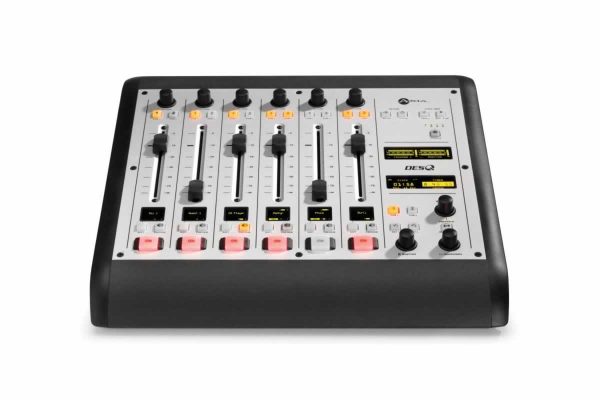
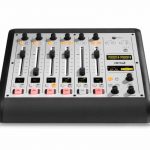
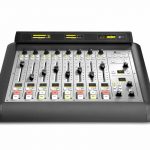
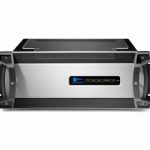
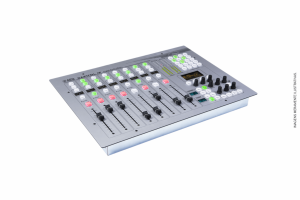
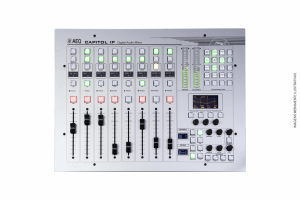
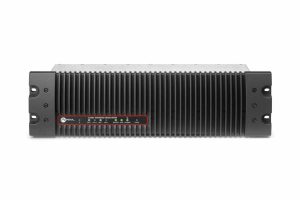
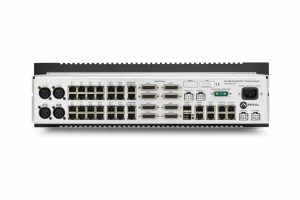
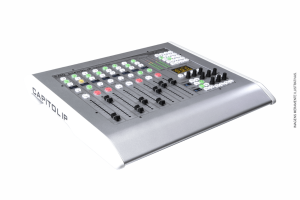
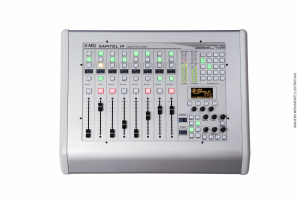
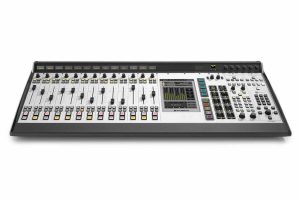
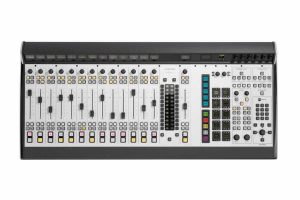
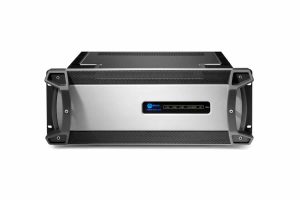
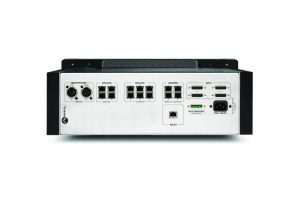
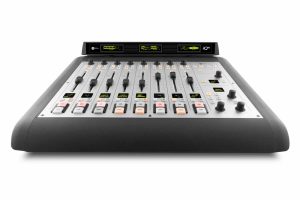
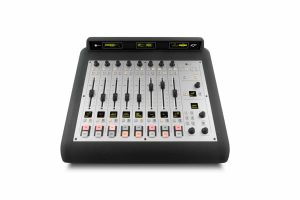


Avaliações
Não há avaliações ainda.